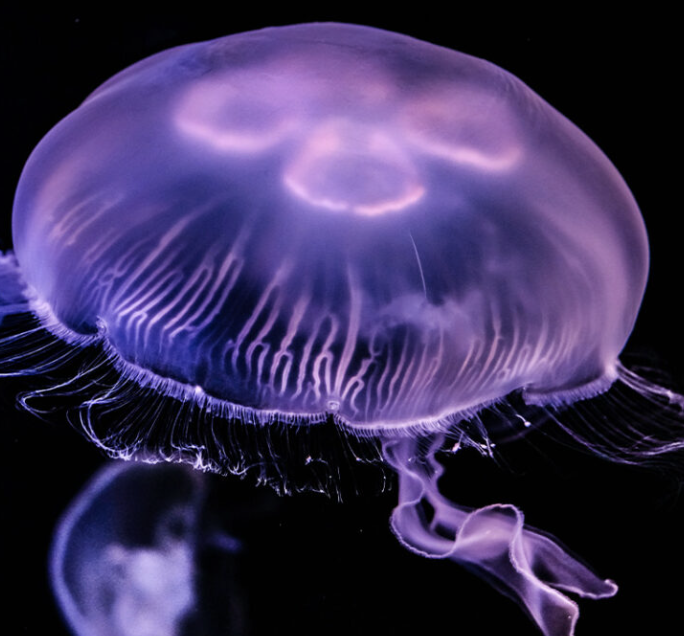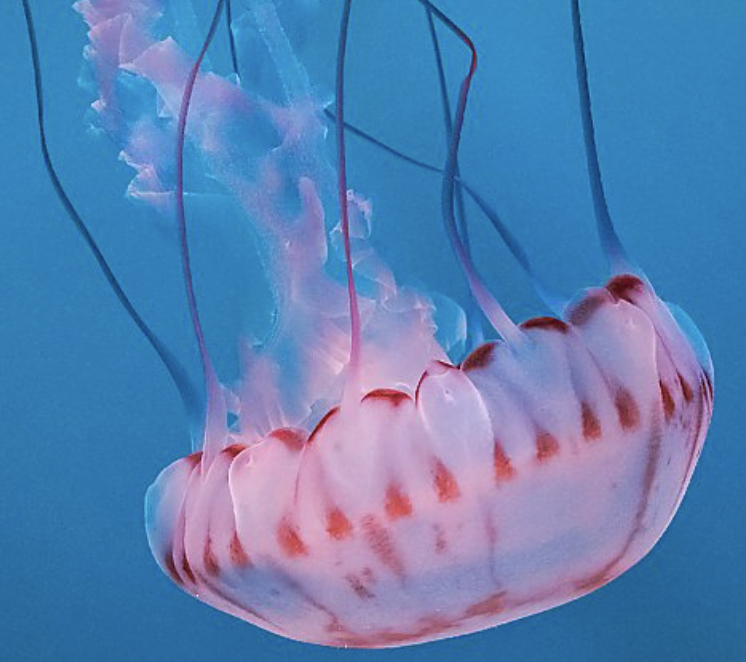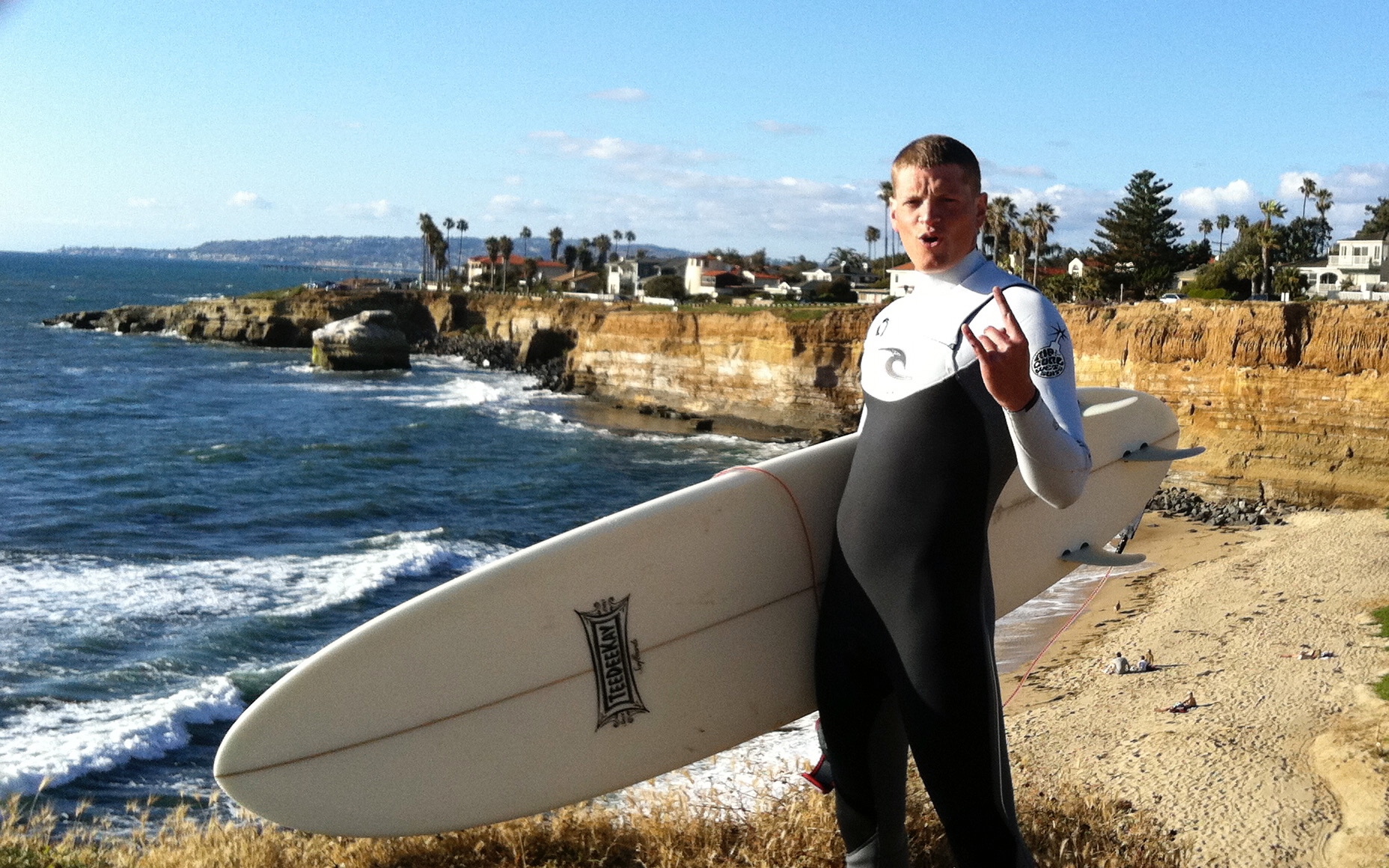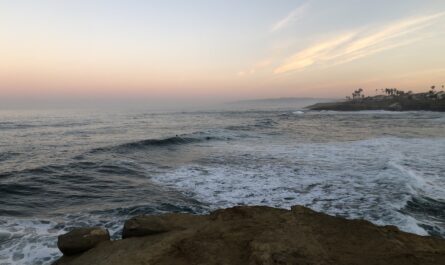Yes, there are jellyfish in San Diego. However, only certain types of jellyfish are in San Diego, and they are not present all times of year.
In this article, discover what types of jellyfish are in San Diego, what time of year they are most common, and what beaches in San Diego jellyfish are most common. We’ll also review some jellyfish sting treatment information so that you are prepared for your next beach visit.
Types of Jellyfish in San Diego
While there are several types of jellyfish in San Diego, they are not the deadly ones that you need to be afraid of. The most common types of jellyfish in San Diego are Moon Jellyfish or Purple Striped Jellyfish. Occasionally you will see other types of jellyfish such as the Pacific Sea Nettle or Velella, but these are quite rare.
The Moon Jellyfish is characterized by short tentacles and are often translucent. They look like a small dish or moon. Stings from Moon Jellyfish are very mild.

Purple Striped Jellyfish are noticeable for their purple stripes running across their bodies. Unlike the Moon Jellyfish, Purple Striped Jellyfish have long tentacles. Stings from these jellyfish are also not dangerous but they are painful.

What Time of Year are Jellyfish in San Diego?
Jellyfish prefer warmer waters. As such, the time of year jellyfish are most common in San Diego is from May-October. Generally, these months are when the San Diego Ocean water is warmest. The peak season for jellyfish is usually July and August when water temperatures are at their height.
What San Diego Beaches are Jellyfish Common At?
While jellyfish are found at most San Diego beaches, there are a few beaches where they are noticeably more active.
For starters, Jellyfish are more common in the warmer water bays like Mission Bay and the Big Bay or Glorietta Bay behind Coronado Island. It is also not uncommon to see higher jellyfish activity around areas with lots of marine life such as La Jolla Shores or Torrey Pines State Beach.
In summary, you could see jellyfish at any San Diego beach, but you may want to avoid these hot spots if you are afraid of being in the water with them!
Does a Jellyfish Sting Hurt?
Jellyfish stings from the types of jellyfish in San Diego are usually mild. It’s possible that you may not even notice the sting when it happens. Later that evening however, you might notice a mild rash or itch develop. At other times, stings from these types of jellyfish create a mild burning sensation on contact.
To avoid a jellyfish sting while surfing or swimming, you can either wear a wetsuit or rash guard. Since jellyfish are more common in warmer waters, a rash guard will likely be your best choice of protection. Interesting enough, there are now sunscreens that offer protection from jellyfish stings such as the SAFE SEA Jellyfish Sting-Blocking Sunscreen.

When to Worry about a Jellyfish Sting?
Usually, jellyfish stings can be treated with diluted vinegar and should start going away within an hour. However, if you notice an allergic reaction that causes trouble with your breathing, see a doctor right away. Alternatively, if you have persistent redness or swelling for 2-3 days; this is a sign of infection and you should also seek out a doctor.
Final Words
Jellyfish stings will hopefully be nothing you have to worry about. In San Diego, the species are not deadly but rather an annoyance when the water is warm! For more San Diego Ocean knowledge or if you are interested in reading my monthly surf spot reviews, consider subscribing below.
Other Sea Creatures in San Diego






